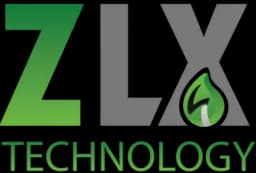Introduction
In today’s fast-paced business environment, the ability to forecast accurately is vital. Artificial Intelligence (AI) is revolutionising how companies predict future trends, manage resources, and make informed decisions.
What is Business Forecasting?
Business forecasting involves predicting future metrics such as sales, expenses, market demand, or resource needs based on historical data and trends. Accurate forecasts allow businesses to plan effectively and stay competitive.
Traditional Forecasting Methods and Their Limitations
- Methods: Time-series analysisRegression modelsExpert judgement
- Limitations: Limited data processing capabilityHuman bias and errorInflexibility in dynamic markets
Introduction to AI in Forecasting
AI enables machines to learn from data, identify patterns, and make predictions. By leveraging AI, businesses can forecast with greater precision, speed, and adaptability.
Core Technologies Behind AI Forecasting
- Machine Learning: Enables systems to improve predictions over time using data without explicit programming.
- Natural Language Processing (NLP): Extracts insights from unstructured data like news, social media, and financial reports.
- Deep Learning & Neural Networks: Mimic human brain functionality for complex forecasting scenarios with high accuracy.
How AI Enhances Business Forecasting
- Real-time analysis of massive datasets
- Detection of hidden patterns and anomalies
- Continuous learning and adaptation
- Multi-variable scenario simulations
Key Areas of Business Benefiting from AI Forecasting
- Finance: AI predicts cash flow, stock performance, and credit risk with precision.
- Supply Chain & Inventory Management: Forecast demand, optimise inventory levels, and reduce wastage.
- Sales & Marketing: Predict customer behaviour, campaign ROI, and churn rates.
- Human Resources: Anticipate hiring needs, attrition rates, and workforce planning.
- Risk Management: Identify potential threats, compliance issues, and market volatility.
Case Studies of AI in Forecasting
- Retail Demand Prediction: Walmart uses AI to forecast demand across thousands of products using weather, trends, and location data.
- Financial Risk Assessment: JPMorgan uses AI to model credit risk and market fluctuations in real time.
- Workforce Planning: Amazon employs AI to align labour needs with customer demand, minimising overstaffing.
AI Tools & Platforms for Forecasting
- Google Cloud AI Forecasting
- Microsoft Azure ML
- IBM Watson
- SAP Analytics Cloud
- DataRobot
Challenges in AI-Based Forecasting
- Data quality and integration issues
- Model transparency and explainability
- High upfront implementation cost
- Skilled talent shortage
Best Practices for Implementing AI Forecasting
- Start with a clear objective
- Clean and unify historical and live data
- Choose the right AI tools/platforms
- Continuously monitor and refine models
- Ensure cross-functional collaboration
Future Trends in AI and Predictive Analytics
- Integration of AI with IoT for real-time forecasting
- Federated learning for secure data use
- Hyper-automation of business operations
- Explainable AI for transparency
Ethical Considerations & Data Privacy
- Ensure ethical use of AI and fair algorithms
- Adhere to GDPR and data governance frameworks
- Maintain data anonymity and consent protocols
Conclusion
AI is transforming forecasting into a strategic powerhouse. By leveraging intelligent algorithms and vast data pools, businesses can drive efficiency, reduce risk, and stay ahead of the curve.

